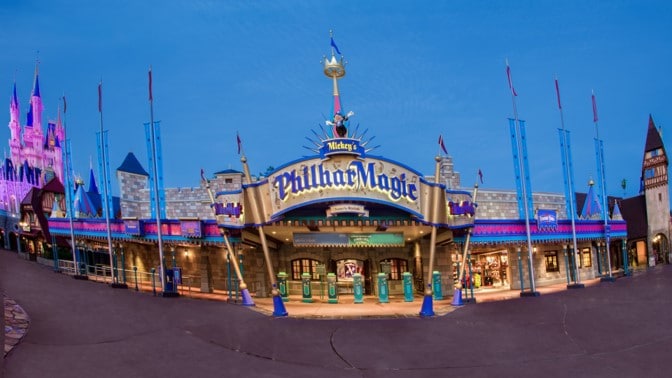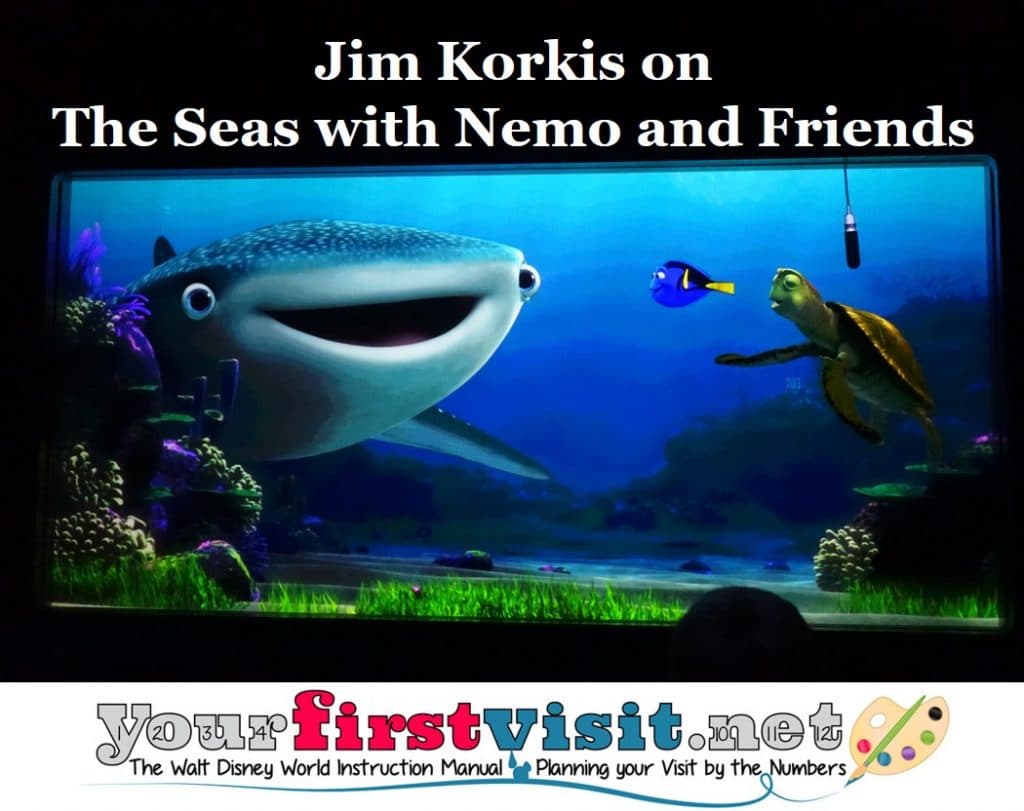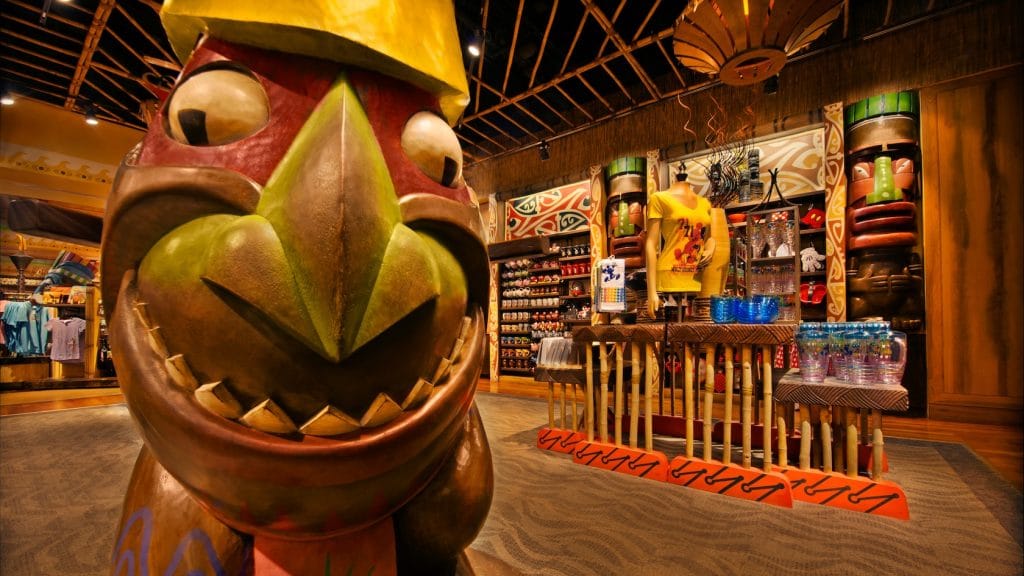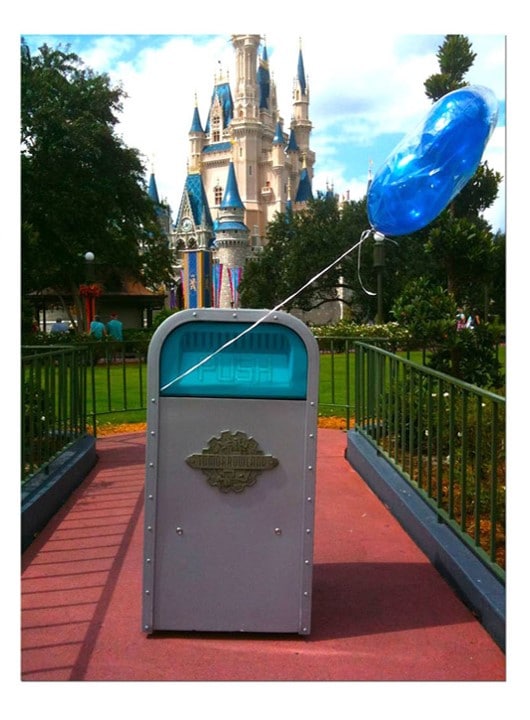Category — A Friday Visit with Jim Korkis
Fridays with Jim Korkis: Mickey’s PhilharMagic
Welcome back to Fridays with Jim Korkis! Jim, the dean of Disney historians, writes about Walt Disney World history every Friday on yourfirstvisit.net.
RICK ROTHSCHILD ON MICKEY’S PHILHARMAGIC
By Jim Korkis
Walt Disney Imagineering senior vice president and executive show director Rick Rothschild spent 41 years working in Imagineering before leaving the Walt Disney Company. Among other things, he worked on the Mickey’s PhilharMagic attraction at the Magic Kingdom.

(c) Disney
Mickey’s PhilharMagic is a 4D twelve minute long attraction in Fantasyland where Donald Duck travels through several different Disney animated feature films including Beauty and the Beast, Aladdin, Peter Pan and The Lion King, to try to retrieve Mickey’s magic hat from the Sorcerer’s Apprentice.
Before the attraction opened in October 2003, Rothschild shared the following with Walt Disney World cast members:
“The last 3-D film that I worked on was The Magic Lamp Theater at Tokyo DisneySea, which made extensive use of 3-D animation for the first time. Working on that gave us the notion that something like Mickey’s PhilharMagic was possible, so we laid the groundwork with Disney Feature Animation, and everybody got excited.
“What allows us to do this attraction is the whole advancement of computer animation and 3-D technology that has been part of advancements used by Pixar Animation Studios and our own work, as well as outside studios. We needed more power and tools that work faster, and now we have them. It’s helped us accomplish what we’ve talked about for years: creating 3-D classic character animation.
“The building has gone through some pretty dramatic changes. The main structure remained but the projection booth was enhanced and enlarged. We’ve made a lot of use of the walls and ceiling and reworked a lot of what’s inside the theater shell. The exterior façade, the marquee and the queue are all new.
“We are using a number of laptops to program the show. There’s no audio or videotape that we have to start and stop like we did long ago. Everything is now stored digitally – just a hard drive with all the video images stored as individual images. You can either play it back in real time or you can stop it and literally work on it frame by frame, so you can study it and work on it very accurately.
“That’s so important because everything we do in programming all the special effects, the lighting and everything else is tied to the idea that you should feel absolutely connected to the world you’re looking at on the screen.
“There’s a great deal of subtlety in what we’re working on to make seamless connections that will suspend your disbelief and let you fall into the 3-D world. A lot of lighting cues and other effects are not designed to draw attention to themselves so much as they supplement the environment that you’re looking at and make you really feel that it’s extending into the real world, or that you’re in that world.
“The film differs dramatically from the other shows in terms of the journey that you go on. In Honey, I Shrunk the Audience and It’s Tough To Be a Bug, you’re physically in a theater. It’s a stage presentation, and things happen as a result of what you’re watching.
“Mickey’s PhilharMagic takes you on this magical journey into the worlds of Disney music and classic characters. The guests’ journey will be much more immersive than an apparent theatrical presentation that uses 3-D as a way to convey special effects.
“Every sense is going to be happily massaged. Sight, sound, tactile….the film is very tactile in a gentle, romantic way. In every different scene, you’re sort of reminded of the environment you’re in and hopefully, you’ll lose the sense that you’re in a theater and get caught up in this physical journey.”
* * * * *
Thanks, Jim! And come back next Friday for more from Jim Korkis!
In the meantime, check out his books, including his new books Vault of Walt Volume 9: Halloween Edition, and Hidden Treasures of the Disney Cruise Line.
Follow yourfirstvisit.net on Facebook or Twitter or Pinterest!!
May 21, 2021 No Comments
Fridays with Jim Korkis: The Seas with Nemo and Friends
Welcome back to Fridays with Jim Korkis! Jim, the dean of Disney historians, writes about Walt Disney World history every Friday on yourfirstvisit.net.
THE SEAS WITH NEMO AND FRIENDS
By Jim Korkis
The Living Seas pavilion that included what was at the time the largest saltwater aquarium tank in the world opened at Epcot in January 1986. The hydrolaters and Seacabs that took guests to Sea Base Alpha were closed in 2001, although the rest of the pavilion and its restaurant remained open.
Starting in 2004, the pavilion was re-themed to the popular Pixar animated feature film Finding Nemo (2003). Imagineer Jerre Kirk was assigned the dual role of project and construction management to oversee the four phases of transformation.

Kirk said, “This third phase was a re-do of the circulation space, merchandise area and the aquarium outside the original ride.” This re-do entailed a new color scheme to the entire pavilion that had to be done while the Coral Reef Restaurant remained fully operational.
The fourth and final phase was the Nemo attraction that officially opened January 2007. Principal engineer Jerold Kaplan said the biggest challenge was adapting to the existing ride around the aquarium.
Kaplan said, “The portion of the old ride that ran around the fish tank is the existing ride system. We snipped track off where it went in and out of the fish tank. The 280 feet of track we added is in the space that used to be theaters and the hydrolaters that took guests to the Sea Cabs.”
The new attraction transports guests in Clamobiles through nine scenes.
“The coral in the first thee ride scenes is a new technique,” said Kaplan. “They are very thin castings of fiberglass that never have been done before.”
Principal Production Designer Ed Hanna worked with Senior Production Designer Eric Miller and Production Designer Gary Graham to refine the technique until it was just right for the coral. Art directors for paint Allen Jones and Julie Bilski added to the process.
The finale includes an entire cast of animated characters from the film singing In the Big Blue World that had been written originally for the Finding Nemo: A Musical stage show at Disney’s Animal Kingdom composed by Robert Lopez and his wife Kristen Anderson-Lopez that would open roughly two months later.
The animated characters appear to be inside the pavilion’s giant saltwater tank swimming with the real fish.
The projection technology in the finale scene was developed by R & D Designer Alfredo Ayala. He set up a demonstration that Imagineer Kathy Mangum said “really opened up the opportunity for us to create the finale. The technology really drove what the creative application could be.”
Imagineers had to tweak the animation and the projection to create the right effect. “Pixar was on site several times to go through the animation to get it right,” said Kaplan.
The anglerfish that chases Marlin in real life moves at incredible speeds and with great agility, so Imagineers had to find a way to make it look real. Making the anglerfish move the right way required extensive modifications of existing technology and lots of trial and error.
WDI vice president and project creative director Kathy Mangum said, “What’s so important about this attraction is that it revitalizes the whole pavilion for us.
“The aquarium is so stunning and this was our chance to take it, extend it and do the overlay using storytelling with classic Disney characters to introduce guests to the pavilion. Epcot is about exploring new places and it was a natural fit to tell the story by using these characters.”
* * * * *
Thanks, Jim! And come back next Friday for more from Jim Korkis!
In the meantime, check out his books, including his new books Vault of Walt Volume 9: Halloween Edition, and Hidden Treasures of the Disney Cruise Line.
Follow yourfirstvisit.net on Facebook or Twitter or Pinterest!!
May 14, 2021 No Comments
Fridays with Jim Korkis: The Bou Tike Shop at Disney’s Polynesian Village Resort
Welcome back to Fridays with Jim Korkis! Jim, the dean of Disney historians, writes about Walt Disney World history every Friday on yourfirstvisit.net.
THE POLYNESIAN VILLAGE BOU TIKI SHOP
By Jim Korkis
One of the most intriguing shops at the Walt Disney World Resort Hotels is the one in the lobby of the Polynesian Village Resort called the Bou Tiki Shop. Besides selling souvenir merchandise specifically themed to that particular resort as well as other items, it is also a playful location.
Dave Venables, the General Manger for the resort when the shop first opened, said, “Bou Tiki dramatically changed the look of the entire first floor of the Great Ceremonial House when it officially opened in May of 2005. It is a much more warm and welcoming feeling for our Guests as they enter our resort.
“Our merchandise Cast Members are very pleased with the way the location has turned out, and we have received many favorable Guest comments from our repeat Guests.”
Walt Disney Imagineering (WDI) created a storyline for the Bou Tiki Shop, and the shop design reflects that concept. A group of mischievous tikis magically awaken from their slumber during the day and decide to frolic at night causing chaos in the shop.

(c) Disney
These naughty tikis rearrange tables and racks, play with the shop’s offerings, pose with new hats and shirts and send the postcard rack spinning. They are unexpectedly caught in the act of this mischief when the morning comes and they are frozen wherever they have been playing. They might have been trying to hide merchandise, push carts and more while disrupting the area.
One is caught looking through a window, another has a finger to its mouth to try to encourage guests to keep the secret of their misbehavior and yet another has eleven triangle-shaped teeth broadly displayed.
WDI managed the project, including the fabrication of fixtures and theme elements.
The tikis were so popular that the resort created the “Bou-Tiki Tiki Trek” where young Guests follow clues to help them find all the frozen tikis throughout the shop.
The first year the shop was open, it won the 2005 Retail Store of the Year in the Theme Park/Attraction Retail category by Chain Store Age magazine, a trade magazine for retail executives.
Chain Store Age described the shop as “an exotically themed design drawn from Polynesian culture that updates the main lobby gift shop at Disney’s Polynesian Resort, marrying its theme with the other shops in the resort.
“Intricate, authentic Polynesian textures and details give the 5,100 square foot shop a unique ambience.
“Eight-foot-tall tiki statues, hand-carved in Bali, add authenticity and an underlying character story to the shopping experience. Merbau hardwood flooring, bamboo surfaces, shells, carpet resembling silver moonlit beaches and hand-woven and painted wall-coverings inspired by authentic Polynesian culture work together to engage Guests in a fun, fantastical experience that is pure Disney.”
Connie Blowe, who was Manager of Retail Sales for the resort when the shop first opened, said “all of the tikis were hand-carved in Bali and we’re all proud of the natural finishes and level of detail in the shop.
“The project team had a lot of fun choosing a name for the shop. We had several to choose from and we decided on Bou Tiki because it’s a play on the word ‘boutique’.”
* * * * *
Thanks, Jim! There’s more on Disney’s Polynesian Village Resort here. And come back next Friday for more from Jim Korkis!
In the meantime, check out his books, including his new books Vault of Walt Volume 9: Halloween Edition, and Hidden Treasures of the Disney Cruise Line.
Follow yourfirstvisit.net on Facebook or Twitter or Pinterest!!
May 7, 2021 2 Comments
A Friday Visit with Jim Korkis: The Disney Monorail by Kurtti, Hunt and Wolski
Welcome back to Fridays with Jim Korkis! Jim, the dean of Disney historians, writes about Walt Disney World history every Friday on yourfirstvisit.net.
YOUR PERSONAL DISNEY LIBRARY (39)
By Jim Korkis
- The Disney Monorail by Jeff Kurtti, Vanessa Hunt and Paul Wolski
As might be suspected, roughly half of The Disney Monorail is devoted to the early history of monorails and Walt Disney’s fascination with transportation, as well as Disneyland’s connection to the development and evolution of monorails.
However, there is more than enough other information about the monorails at Walt Disney World to justify a review of the book for this column. There is even information on the Disney monorails in Japan that have windows in the shape of Mickey’s head silhouette.
In the past, I have been somewhat disappointed by Disney Editions books because they seemed to concentrate more heavily on the graphics than the text, which too often seemed like a limited accessory.
While The Disney Monorail does include beautiful, wonderful images from photos to illustrations to documents and more, the text here is not only accurate but informative and illuminating even when provided in “bite-sized” chunks.
I have always had great respect and appreciation for how author Jeff Kurtti has been able to maneuver through the many restrictions in writing for Disney Editions to provide outstanding new information rather than mere publicity “fluff”. In this book he is assisted by the art background of Vanessa Hunt and Paul Wolski in creating a well balanced and pleasing design for the entire book.
Jeff Kurtti is a leading authority on Disney history. He is the author of more than thirty books and was creative director, content consultant, and media producer for The Walt Disney Family Museum, among many other accomplishments.
Vanessa Hunt is a Walt Disney Imagineer with a background in art history, and worked on preserving more than 160,000 pieces of original artwork for the Walt Disney Imagineering Art Collection. She is also the coauthor of Poster Art of the Disney Parks (2012) and Maps of the Disney Parks (2016), as well as a designer on Marc Davis in His Own Words: Imagineering the Disney Theme Parks (2019).
Paul Wolski is a graphic designer, creative director, and illustrator whose career began with Walt Disney Imagineering. He served as character illustrator for all signage in Mickey’s Toontown at Disneyland and provided character graphics for Tokyo Disneyland and Disney’s Hollywood Studios in Florida. Paul has worked as a book designer, collaborating with Jeff Kurtti on From All of Us to All of You: The Disney Christmas Card (2018) and working with Hunt on Marc Davis in His Own Words: Imagineering the Disney Theme Parks (2019).
Having those artists involved resulted in such treasures as being able to reverse the dust jacket providing a panoramic poster of 1975 concept art by John DeCuir of Epcot that spotlights the monorail.
The images in the book are large enough for a reader to immerse himself into them and look for details, and are diverse enough that they are not the usual images so familiar to Disney fans who have seen other articles about the monorail.
I learned new information so I believe that not only will this book be of interest to the casual Disney fan who likes to browse “coffee table” books but also to the Disney aficionado who wants some new material.
I was surprised not to find more material from Bob Gurr and also surprised that the bibliography references articles on websites (that I know from personal experience might disappear without warning) but very few books.
I highly recommend adding The Disney Monorail to your collection if you are a Disney fan.
* * * * *
Thanks, Jim! and come back next Friday for more from Jim Korkis!
In the meantime, check out his books, including his two new books, Vault of Walt Volume 9: Halloween Edition, and Hidden Treasures of the Disney Cruise Line.
Follow yourfirstvisit.net on Facebook or Twitter or Pinterest!!
April 30, 2021 No Comments
Fridays with Jim Korkis: The Walt Disney World Resort Hotel Pools
Welcome back to Fridays with Jim Korkis! Jim, the dean of Disney historians, writes about Walt Disney World history every Friday on yourfirstvisit.net.
THE WALT DISNEY WORLD RESORT HOTEL POOLS
By Jim Korkis
Every Walt Disney World resort hotel features at least one large feature pool usually designed for the entire family. Most also have a playground nearby and also a kid’s pool or a kid’s water play area. Food and drink are usually available nearby, and pool games and other activities are common.
Many of the resorts also offer an additional “quiet” or “leisure” pool or pools that are usually frequented by adults and older children who just want to relax.
Every guest has their own particular favorite pool from the many different varieties available. All the Moderate and Deluxe resorts have water slides, but the Value resorts do not.

WDI senior development manager for resorts Tim Warzecha said, “Even our pool areas have their own separate identity and storyline that reinforces the overall story of the hotel. Imagineers are storytellers and the most critical part of our job is coming up with the story and reinforcing it throughout all the details.”
For instance, the Samawati Springs pool at Kidani Village at Disney’s Animal Kingdom Lodge went through WDI planning to create an elaborate tale for the area before it was built that influenced what colors and design elements would be incorporated.
Warzecha explained the back story, “Here we have a watering hole and an animal observation camp from before the hotel was built and it’s now abandoned. Because it’s been abandoned, the water tower is falling apart and sprouting leaks which acts as part of our interactive water feature area.
“We also have a windsock area. In order to keep the animals away from the food, we started to hang buckets off of the windsock area. Because it’s elevated, as it rains, the buckets spill out to get our Guests wet.”
The Wilderness Lodge pool was supposedly created when Georgie MacGregor, an unlucky prospector, brought dynamite to aid in his mining of the area, but ended up blowing up his cabin. The huge crater that remained became the pool when it was filled by the water of the Silver Springs.
Imagineers work with various departments and outside contractors to add a variety of elements including colors, textures and lighting solutions. Careful consideration is placed on providing access for all Guests that resulted in things like dual handrails for pool stairs and aquatic wheelchairs to assist with Guest mobility needs.
Walt Disney World manager of Worldwide Safety and Accessibility Bob Minnick said that guests especially appreciate those pools that have a sloped entry which allows them to walk straight into the pool.
Sometimes known as “zero entry,” it means that entering the pool is like at a beach that gently and gradually slopes into the water, becoming deeper with each step. This provides easier access for children, the elderly, and those with mobility issues.
The pools are cleaned daily as needed. Guests are very interested in what the pools look like since they are not just the icing on the cake for the vacation experience, but considered an important reviving getaway after time in the parks.
The largest single pool at a Walt Disney World resort hotel is the Big Blue Pool at the Art of Animation resort. It holds over 300,000 gallons of water. Uniquely among the pools on property, it features underwater speakers that play music as well as dialogue of some of the characters from the Pixar animated feature film Finding Nemo.
* * * * *
Thanks, Jim! And come back next Friday for more from Jim Korkis!
In the meantime, check out his books, including his new books Vault of Walt Volume 9: Halloween Edition, and Hidden Treasures of the Disney Cruise Line.
Follow yourfirstvisit.net on Facebook or Twitter or Pinterest!!
April 23, 2021 No Comments
Fridays with Jim Korkis: Trash Cans at Walt Disney World
Welcome back to Fridays with Jim Korkis! Jim, the dean of Disney historians, writes about Walt Disney World history every Friday on yourfirstvisit.net.
TRASH CANS AT WALT DISNEY WORLD
By Jim Korkis
According to legend, when Walt Disney was designing Disneyland, he went to several entertainment venues like Tivoli Gardens and Knott’s Berry Farm, and took extensive notes on the behavior of guests and the placement of items.
In the case of the placement of trash cans, Walt (says legend) observed how long a person might carry a piece of trash before finally discarding it on the ground and made sure that Disneyland’s trash cans were spaced less than that distance. Supposedly, that distance was roughly thirty feet.
Another innovation was making sure the cans all had lids and hinged flaps so that the trash would not overflow or distract with an unpleasant smell or the sight of garbage.

(c) Disney
In addition, in order to maintain the consistency of each land of the park, the trash cans were also themed to that particular area. That attention to detail included everything from logos to decorative borders to images. New designs are always being introduced.
While the trash cans in Star Wars: Galaxy’s Edge reflect the starkness of the environment, the actual trash compactor number on the Death Star in the original movie is worked into the receptacle’s design.
Recently, at Disney’s Animal Kingdom’s Restaurantosaurus, Disney introduced three trash cans next to each other: a regular trash can, a composting trash can, and a recycling can.
A clever example of re-using existing assets to save money for the Fort Wilderness Resort & Campground when it first opened in 1971 was demonstrated by installing trash cans designed to look like tree stumps that had previously been used at the Indian Village area at Disneyland that had just closed.
The designs of the trash cans have become so iconic that Disney has even merchandised salt shakers, a pin set and Christmas ornaments and more with these designs.
While working at WDW in 2005, I got to talk to Wayne Culver, who opened the WDW Custodial Department in when the Magic Kingdom debuted in 1971.
He told me, “The general guideline for parks, streets and pathways is approximately one trash can every 100 feet. This is highly variable and subject to conditions. For example, some areas of the Epcot promenade, the spacing is farther apart; however, as you approach vendor carts, outdoor Food and Beverage areas and more crowded zones, the spacing is denser.
“For quick-service food locations, the standard is roughly one can for every 40 tables. The standard has changed very little since opening in 1971.
“When Walt Disney Imagineering designs our parks, they always consult with Custodial and Operations experts before drawing the cans on the park layout drawings. The drawings are used to initially place the cans and reflect the spacing guidelines I’ve mentioned. However, Custodial and Operation have full latitude to move cans according to operational needs.”
PUSH, the robot-controlled talking trash can, was created by Daniel Deutsch, and entertained guests at Walt Disney World from February 1995-February 2014. He is still active at Disneyland, Disney’s California Adventure Park,Tokyo Disneyland (speaking Japanese and English), Disneyland Paris (French and English) and Hong Kong Disneyland (English, Cantonese and Mandarin).
Over the years, Push has assisted in several marriage proposals, danced with Michael Jackson (who offered to buy him), and even unofficially ran for mayor of Tomorrowland. His recycling cousin known as Pipa (Swahili for “trash can”) first appeared in 1999 at Disney’s Animal Kingdom.
* * * * *
Thanks, Jim! And come back next Friday for more from Jim Korkis!
In the meantime, check out his books, including his new books Vault of Walt Volume 9: Halloween Edition, and Hidden Treasures of the Disney Cruise Line.
Follow yourfirstvisit.net on Facebook or Twitter or Pinterest!!
April 16, 2021 No Comments



